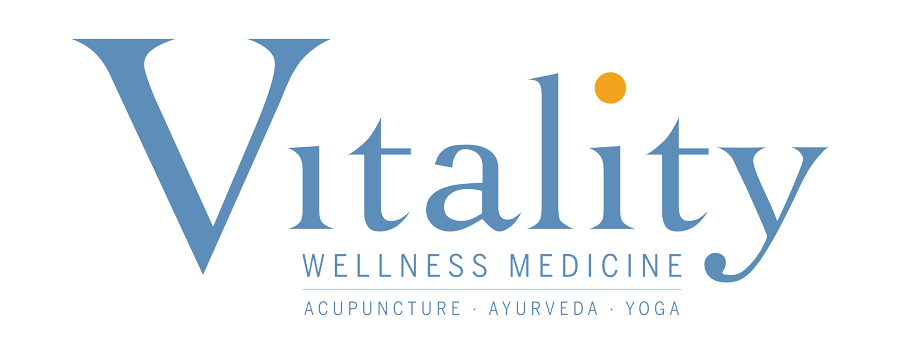From menarche to menopause, women are aware of the hormones cycling through their bodies. But, are we really aware of their impact on their bodies? There are many reasons we’ve become disconnected from our hormonal shifts; for instance, the advent of hormonal and non-hormonal-based birth control methods. The first symptoms of hormone imbalance are often shrugged off as a part of womanhood, when, actually, they are signals to pay attention to. I have patients ranging from ages nine to 70 trying to balance their hormones. [quote]Often, we have been searching for a solution for so long that it seems impossible to fix, or we have accepted that, if everyone we know has hormonal issues, they must be a part of life. [/quote]
While hormonal health is crucial to overall well-being, we tend to treat women’s health (specifically fertility and menopause) much like car maintenance: reactionary rather than proactive (that’s how I service my cars, at least). We keep ignoring our “service lights” (or, afforementioned signals) until, one day, we can’t ignore the increasing hormonal imbalance symptoms; including, weight gain, fatigue, depression, cravings, PMS mood swings, insomnia, anxiety, infertility, irregular cycles, daily alcohol use to relax, low sex drive – the list goes on and on. When it gets to this point, we can no longer ignore that it’s time to make a change. Healthy and simple habits can have a profound impact on our day-to-day hormone health. Not only is there hope, there are also actual solutions.
First, let’s understand the factors we are up against that disrupt healthy hormone cycles:
- Environmental Toxins. Because they mimic estrogen, environmental toxins called xenoestrogens are hormone disruptors that impact the biochemical processes. They are fat soluble and non-biodegradable, so, they will accumulate in the system. Toxins get into the body via commercial beauty products, cleaning products, perfumes, animal fats, plastics, and even water supplies contain xenoestrogens. To avoid toxin consumption, only consume water that is filtered or from a clean source, buy non-toxic products, and avoid BPAs in plastic and perfumes.
- Lifestyle. Routines that build and reward stress and overworking impact digestion, blood sugar, and liver detoxification. Under high-stress levels, the body secretes cortisol. Due to the utilization of the same building blocks, cortisol (the stress hormone) production can rob sex-hormone (estrogen, progesterone, and testosterone) production, creating a deficit of estrogen, progesterone, and testosterone when undergoing undue or lasting stress levels.
- Diet. Inflammation intake in the diet leads to biologically charging uphill to maintain hormones. The top inflammatory foods are gluten, sugar, dairy, soda, coffee, alcohol, and drugs (prescription and non-prescription). Lifestyle or environmental exposure, as mentioned above, is another top contributor to inflammation in our organs.

How to tell if hormones are balanced
Look for regular menstrual cycles (between 26 and 30 days), bleeding for three to seven days, no bleeding or spotting between cycles, sex drive, healthy skin and hair, balanced sleep cycles and blood sugar, as well as digestive health. Clinically, I check in with appetite, energy levels, emotions, and sleep. In addition, the absence of the imbalanced symptoms mentioned in the previous paragraph.
How to maintain hormone balance
- Digestion and absorption of nutrients. This includes daily elimination of waste – one or more bowel movements per day – with healthy transit time. To check your transit time, eat one or two servings of raw beets and take note of how long it takes them to present in the bowels (average time is 30 to 40 hours).
- Blood sugar stabilization. This refers to the body maintaining a normal range of blood sugar level and not being addicted to dietary sugars or carbohydrates for its fuel source.
- Liver detoxification pathways: The liver functions to detoxify, metabolically working in two phases (aptly named phase 1 and phase 2). Enzymes and nutrients are required for it to function well, and, when the process becomes less than optimum, hormone balance can be impacted.
Next, let’s take a scientific look at women’s hormones
Women have two primary hormones: estrogen and progesterone. Each are produced in the ovaries, adrenal glands, and placenta during pregnancy. Estrogen is predominant in the ovaries and is additionally produced in fat cells. Women also have testosterone, though it plays a less dominant role in hormonal cycles. During menstruation, hormones are at the lowest levels. The uterine lining builds estrogen, which increases until ovulation, at which point estrogen begins to stabilize and progesterone increases. Progesterone levels rise during the luteal phase (cycle days 14 to 28) until menstruation. Looking at the timing of any emotional or other imbalance, such as pain, spotting, bleeding, or acne, can be a clue as to which hormone is out of balance (though often multiple pathways are impacted).
One of the most common concerns, called a pattern in holistic medicine, is estrogen dominance. The symptoms can range from PMS, weight gain, fibrocystic breast tissue, anxiety, thyroid dysfunction, hot flashes, mood swings, reduced sex drive, blood sugar issues, or fatigue. Many related problems manifest, such as irregular periods, fibroids, infertility, polycystic ovarian syndrome, cysts, and endometriosis. Another pattern is progesterone excess, which appears with possible PMS, sleepiness, bloating, constipation, depression, candida, or hot flashes. This is where we start to see symptoms overlap, and it can feel difficult to understand what is happening and why. Many of the underlying causes or roots are the same, so we can start with some simple changes and observe the impact on the body.
How to help balance hormones
A safe and effective way to support hormones is with “seed cycling,” as described in Cooking for Hormone Balance. During cycle days one through 15, add one tablespoon of freshly-ground flax and pumpkin seeds to your diet daily to support healthy estrogen levels, liver detoxification, and bowel movements. During cycle days 15 through 28 (approximately), include one tablespoon of freshly-ground white sesame and sunflower seeds daily to support progesterone levels. Another piece of the hormone puzzle are neurotransmitters, such as serotonin, dopamine (the pleasure hormone), and gamma-amino butyric acid GABA (a calming neurotransmitter), which all have a lot to do with how we feel during the cycle.
Adequate nutrition is paramount in hormonal health, as food is the building block of all tissue in the body. According to Ayurveda, the reproductive system is the last to receive nourishment. Healthy, well-balanced diets, along with adequate sleep, exercise, and experiencing joy, help decrease daily stressors. Consider starting with simple steps, such as utilizing food as medicine.

Foods that support serotonin and estrogen
- Probiotic-rich foods, such as pickles, sauerkraut, yogurt with active cultures, and kefir, help the gut produce neurotransmitters and hormones.
- Turmeric is an anti-inflammatory herb that prolongs serotonin in the brain.
- Tryptophan, found in turkey, dairy, dates, and sunflower seeds, boost serotonin.
- Omega 3s; for instance, coldwater fish, flaxseeds, and walnuts, boost serotonin.
- Chocolate (in moderation) quickly increases serotonin and dopamine, due to anandamide-like molecules. (This explains the cravings!)
Foods that support dopamine and testosterone
- Food that contains phenylalanine, such as beets, edamame, nuts, eggs, dairy, and meat.
Foods that support gamma-amino butyric acid (GABA) and progesterone
- Cherry tomatoes, kefir, shrimp, green tea, lemon balm, ashwagandha, and omega 3–rich salmon.
Popular and useful herbs to support hormones
- Vitex agnus-castus, known as chaste tree berry, supports estrogen and supports the brain.
- Dong Quai (angelica sinensis), a Chinese herb that supports estrogen.
- Black cohosh (actaea racemosa) supports serotonin.
- Silybum marianum, also known as milk thistle, supports estrogen and liver detox pathways.
While medical interventions (what we call the “big guns” in holistic medicine), such as direct hormone supplementation, are available and useful at times, they are typically only temporary. Consult with your medical providers: MDs, NDs (naturopathic doctors), acupuncturists, and nutritional educators for in-depth personal work, use the resources and tools for self-education, and share what you know to help your friends and family. One of the most important things about maintaining hormone health is to know that we can take things into our own hands. Our everyday actions can help to gradually regain and maintain health. We each have the power to make changes that will establish an internal support system for life-long hormone health for women.

